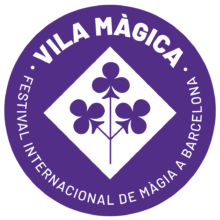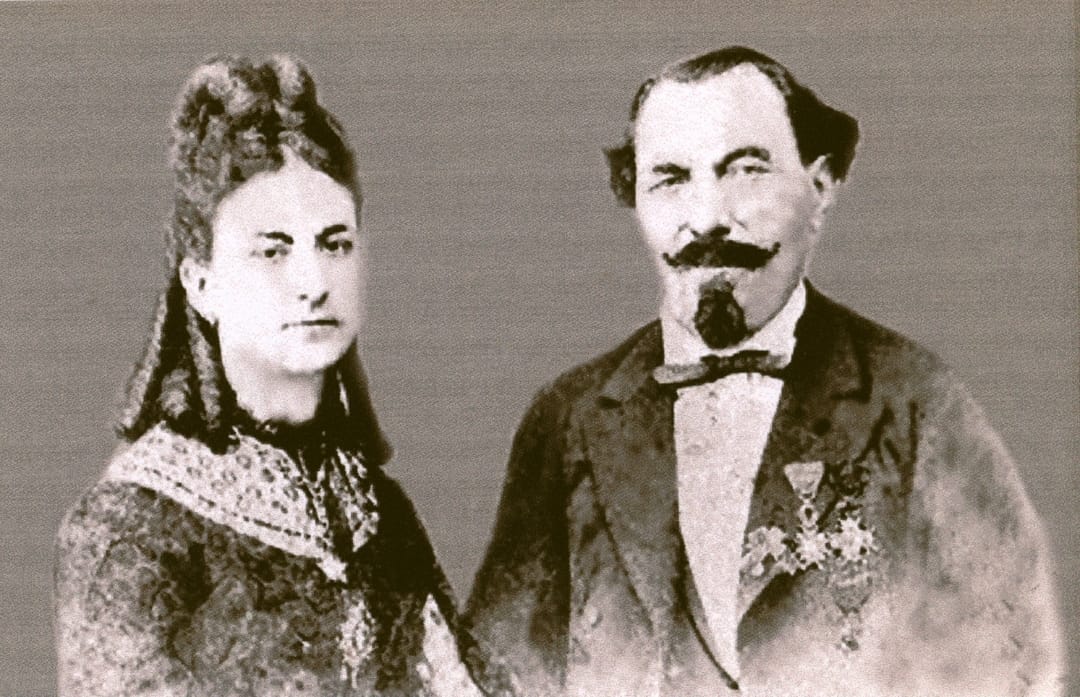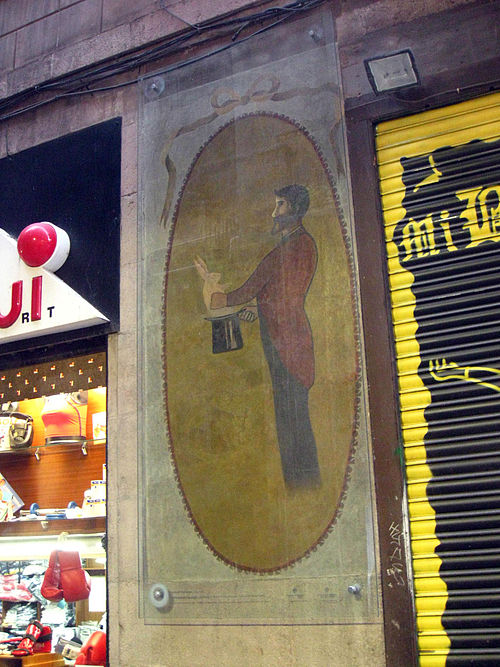One of the new addittions to the 2nd edition of the Vila Màgica Festival, is the creation of the Fructuós Canonge International Magic Contest, endorsed and in collaboration with the International Federation of Magic Societies (FISM).
We have chosen to name this contest after Fructuós Canonge, collaborating with Ajuntament de Montbrió del Camp, in tribute to the career of this artist and magician from Montbrió del Camp, who was a pioneer in many aspects of the world of magic in our country, and thus recognize his internationally renowned career, which celebrated the 200th anniversary of his birth last year. If you’d like to participate in the contest, you can visit the contest page below:
If you want to discover more details about this artist’s hectic life and why we chose him, continue reading 👇
Who was Fructuós Canonge?
Fructuós Canonge i Francesch was born in Montbrió del Camp on March 27, 1824. Of humble origin, he moved with his family to Barcelona at the age of 7. There, he worked many small jobs, until he got to the job of shoe shiner, through which he made himself a place in Plaça Reial and learned that tricks helped attract customers. It was a time when the city was going hungry and revolutions were on the rise, the last of which was “la Jamància”. Without participating in it, Canonge was arrested for his well-known liberal thinking, and brought to trial where he was sentenced to death penalty.
He escaped this thanks to his connections in the military, but he was unable to escape a six-year sentence in the overseas fleet in Cuba, of which he only served 11 months, due to being pardoned. He nearly died in a shipwreck during his return from Cuba, but on the way back, having passed through New York, he had it clear: he would become a professional illusionist. From then on, he became known as “The Great Canonge,” “The Spanish Merlin,” and “The Catalan Merlin.” He died in Barcelona in 1890, where, according to the press of the time, his funeral was the largest in living memory.
He was a great self-taught, 19th century, magician and illusionist, who didn’t make his debut until he was 34, at the Théâtre des Champs-Élysées on Passeig de Gràcia in Barcelona. He later toured local stages in Catalonia and Spain, but also around the world, including the south of France and a monumental tour of South America, which included Uruguay, Argentina, and Paraguay. He did this with his wife, Maria Degà, who accompanied him in his performances, acting as his assistant, from the moment they married in 1866.
- Maria Degà & Fructuós Canonge. Picture provided by the Ajuntament de Montbrió del Camp
He performed before leading political figures of his time, such as Isabel II Queen of Spain, Amadeo of Savoy, and Alfonso XII. It is said that Canonge was a man of republican ideology and that, before the monarchs, he displayed his rebellious streak, yet they showered him with titles and decorations. There’s a saying from 19th-century Barcelona: “You have more medals than Canonge.”
His mark in Barcelona is still clearly visible. It remains on a plaque in the Plaza Real with the inscription: “Limpiabotas Canonge” (Canonge Shoe Shiner) in honor to his origins; and in a mural painting on “Pas de l’Ensenyança” street, where our magician appears pulling a rabbit out of his top hat.
Furthermore, in the records of the National Library of Spain it is included the first publication dedicated to a magician’s biography. Written in 1875, it is dedicated to Fructuós Canonge.
Despite enjoying great success and receiving many medals, Canonge eventually died a poor man. He remained humble in spirit and mind, donating the money he earned to charitable causes. Even after retiring from magic, he opened a shoe-shining shop, where he often donated his equipment or gave it to underprivileged children in the neighborhood so they could work.
- Centennial mural of Fructuós Canonge at Pas de l'Ensenyança. Restored on 07/23/2003 by the Institut de paisatge Urbà de Barcelona.
You can also watch this video from Betevé, in which Pau Martínez from El Rei de la Màgia explains it to us in a fun and dynamic way:
Why this artist for the name of Vila Màgica Festival’s contest?
Canonge was born in an era marked by major social and cultural changes, which profoundly influenced his interest in the world of entertainment and performance. With a natural passion for magic, he began exploring illusionist techniques from an early age, developing a unique style that combined elegance, technique, and a strong sense of storytelling.
His shows were characterized by a combination of wit and sophistication, and frequently incorporated theatrical elements that gave the tricks an air of mystery and fascination. His innovative approach earned him both local and international acclaim, cementing his reputation as one of the greatest magicians of his time.
Fructuós Canonge was also a pioneer in the use of magic as a form of cultural expression, inspiring other artists with his commitment to constant improvement and creativity. His career as a magician is remembered with admiration in Montbrió del Camp, where his legacy continues to inspire new generations of magicians and artists.
It’s not every day that figures of this caliber emerge, capable of inspiring future generations not only through their art, but also through their own history and personality. We believe that Fructuós Canonge is a great local Catalan figure who had a huge impact not only on the Barcelona of his time, but also on the rest of the world. He deserves to be remembered and represents the kind of magic we want to attract to the Vila Màgica Festival’s International Magic Contest. A magic that knows no age. Based on effort and dedication, but above all, on passion and innovation stemming from perseverance and the will to push the boundaries of what is known, with the intention of producing the effect of fascination that captivates people’s attention and hearts, making them imagine that another world is possible.




